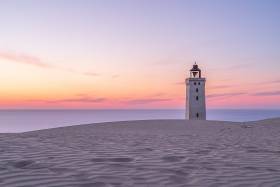Displaying items by tag: Rubjerg Knude
Lighthouse On Rails: Denmark Moves Landmark Light From Eroding Coastline
A lighthouse in Denmark that was first lit in 1900 has been moved further inland on special rails to protect it from coastal erosion.
TheJournal.ie reports on the 23-metre-tall Rubjerg Knude, which was deactivated in 1968 yet remains a popular landmark in the far north of Denmark.
However, the area is subject to shifting sands and coastal erosion that saw the lighthouse museum and coffee shop abandoned in 2002, and even led to the dismantling of 750-year old church close by in 2008.
Originally 200 metres from the shore, the lighthouse was just six metres from the edge when works began last week to move it some 70 metres inland on a set of specially built rails to accommodate its heavy masonry.
It’s now hoped that the future of the lighthouse, described by Danish environment minister Lea Wermelin as “a national treasure”, has been assured until 2060.
TheJournal.ie has more on the story HERE.

























































